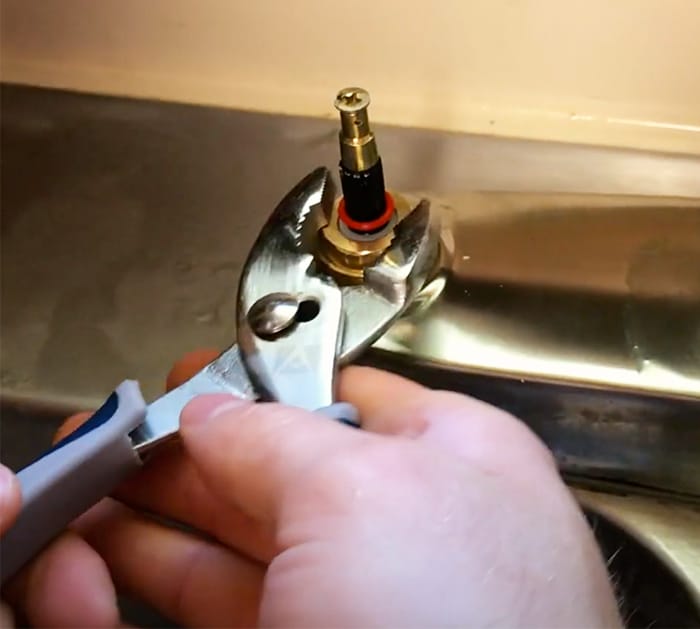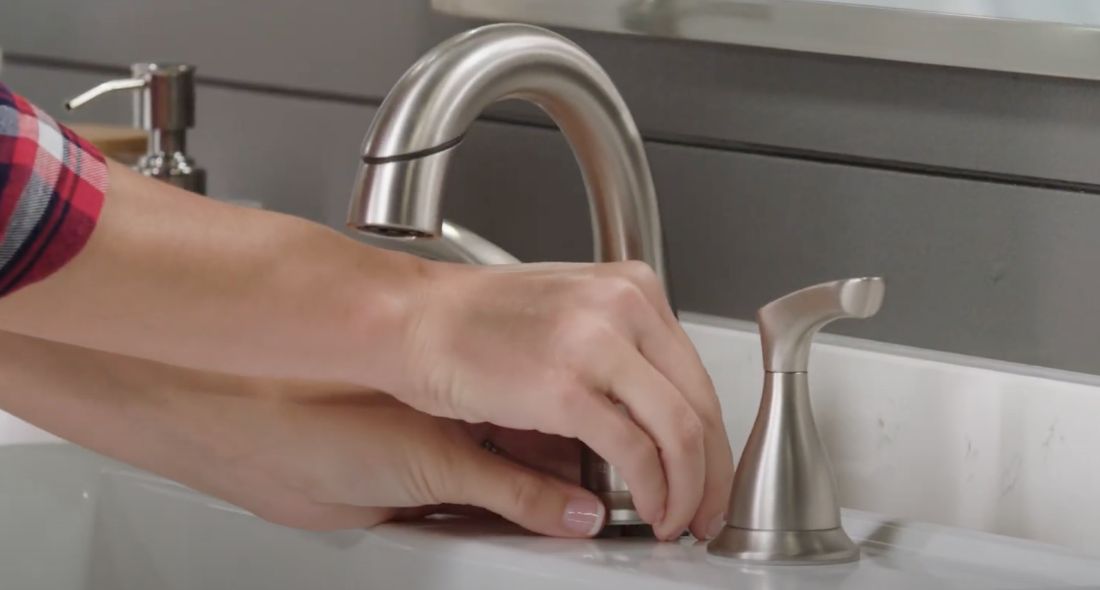Exploring the Significance of Fixing a Dripping Faucet
Exploring the Significance of Fixing a Dripping Faucet
Blog Article
Were you searching for suggestions around What Causes Leaky Faucets & How To Fix Them?

Dripping faucets may appear like a small aggravation, yet their impact goes beyond just the annoyance of the sound. From wasting water to incurring unnecessary financial costs and wellness threats, disregarding a leaking faucet can lead to numerous effects. In this write-up, we'll explore why it's important to address this common house problem quickly and efficiently.
Wastefulness of Water
Ecological Impact
Dripping faucets add considerably to water wastage. According to the Epa (EPA), a single faucet leaking at one drip per second can lose more than 3,000 gallons of water each year. This not only stress water resources however also impacts communities and wildlife depending on them.
Step-by-Step Guide to Taking Care Of a Dripping Tap
Tools Needed
Prior to attempting to repair a trickling tap, gather the needed devices, consisting of an adjustable wrench, screwdrivers, replacement components (such as washers or cartridges), and plumber's tape.
Typical Tap Issues and Their Solutions
Recognize the sort of tap and the specific issue triggering the drip. Typical issues include damaged washers, rusty shutoff seats, or damaged O-rings. Describe supplier directions or on-line tutorials for step-by-step guidance on fixings.
Financial Costs
Enhanced Water Bills
Past the environmental influence, dripping faucets can blow up water bills significantly. The gathered wastage in time converts right into greater energy expenses, which could have been prevented with timely repair services.
Possible Residential Or Commercial Property Damage
Furthermore, long term trickling can bring about harm to components and surface areas surrounding the faucet. Water accumulation can cause discoloration, deterioration, and also structural issues if left neglected, causing additional fixing expenses.
Health and wellness Concerns
Mold And Mildew and Mildew Growth
The consistent existence of moisture from a trickling faucet develops a suitable environment for mold and mildew and mold growth. These fungis not only endanger indoor air high quality but additionally position wellness risks, especially for people with breathing conditions or allergic reactions.
Waterborne Conditions
Stagnant water in dripping faucets can become a breeding ground for bacteria and various other virus, boosting the danger of waterborne illness. Contaminants such as Legionella bacteria grow in stationary water, potentially leading to serious illnesses when consumed or breathed in.
DIY vs. Specialist Repair service
Benefits and drawbacks of DIY Fixing
While some may try to take care of a dripping tap themselves, DIY repair services come with their very own set of difficulties. Without proper understanding and devices, do it yourself attempts can worsen the issue or result in insufficient repair work, prolonging the issue.
Advantages of Employing a Professional Plumber
Employing a specialist plumber ensures that the underlying cause of the trickling tap is resolved effectively. Plumbings possess the expertise and equipment to identify and repair faucet concerns successfully, saving time and reducing the danger of additional damages.
Ecological Duty
Individual Contribution to Conservation
Taking responsibility for fixing dripping faucets aligns with broader efforts towards water preservation and ecological sustainability. Every individual's actions collectively make a substantial influence on maintaining valuable resources.
Lasting Living Practices
By prioritizing punctual repair services and embracing water-saving habits, people contribute to sustainable living techniques that benefit both existing and future generations.
Preventive Measures
Regular Upkeep Tips
To prevent trickling faucets, execute regular maintenance such as cleaning up aerators, inspecting for leakages, and changing worn-out components promptly. Furthermore, take into consideration installing water-saving gadgets or updating to much more effective components.
Importance of Prompt Services
Addressing leaking taps as quickly as they're seen prevents further water waste and prospective damage, ultimately saving both water and money in the long run.
Impact on Building Value
Perception of Well-Maintained Residential Or Commercial Property
Maintaining a residential property in good condition, consisting of dealing with maintenance issues like trickling taps, improves its perceived worth and charm among possible customers or renters.
Influence on Resale Worth
Features with properly maintained plumbing fixtures, consisting of faucets, command greater resale worths in the real estate market. Resolving leaking taps can contribute to a favorable impression throughout home inspections and arrangements.
Conclusion
Attending to a dripping faucet surpasses mere benefit; it's a crucial step toward preserving water, minimizing monetary expenses, and guarding health and wellness and building. Whether via DIY repair services or professional support, acting to take care of leaking faucets is a tiny yet impactful way to advertise accountable stewardship of sources and add to a much healthier, extra lasting future.
How to Fix a Dripping or Leaky Faucet
A leaking faucet is one of the most common problems that homeowners encounter, but it being commonplace doesn’t make it any less annoying. The constant drip drip drip of a leaking bathtub faucet, showerhead, or sink tap can disturb your home’s serenity. Left neglected, a dripping faucet can also result in higher water bills and discoloration or mold growth in your sink or plumbing fixtures.
Fortunately, you don’t have to be a trained plumber to know how to stop a dripping faucet. With some basic tools, replacement parts, and a little patience, leaky faucet repair is a breeze. In this article, we’ll explain what causes dripping faucets and how you can fix them.
What Causes a Leaking Faucet?
Kitchen and bathroom faucets come in all manner of designs, but most involve some combination of valves, O-rings, seals, and washers. The O-ring is usually the weakest link, but any one of these pieces can wear down over time. Heat, moisture, temperature fluctuations, minerals, mold, and movement can contribute to warping and corrosion, breaking the watertight seal. This just comes with the territory of being a homeowner. Everything is always subject to wear and tear, and some component parts of your appliances and fixtures need to be replaced on occasion. At least replacement O-rings are cheap!
More rarely, dripping faucets can be a symptom of excessively high water pressure. Were this the case in your home, you would probably notice that the leak is not isolated to one faucet. Water pressure issues are harder to resolve on your own. We recommend contacting a professional plumber if you suspect your water pressure is too high.
How to Fix a Dripping Faucet
Pipe wrench or monkey wrench Allen wrench set Screwdrivers Old towel or rag Shut off the water.
Before you do anything, you need to turn off the water to keep from drenching your kitchen or bathroom. You should find a valve under the sink and against the wall. Once you’ve turned this valve, try turning the faucet on to confirm that the water source has been cut off.
If you can’t locate your local valve for the faucet you’re working on, you can always shut off the water to the house at the main valve. Of course, this will prohibit anyone from using the sinks, showers, or toilets while you’re working on the faucet that’s giving you trouble.
Plug or block the drain.
You’ll be disassembling the faucet and removing some small bits of hardware. Plug the drain with a stopper or rag to avoid the possibility of a small screw falling into your P-trap.
Take apart the faucet assembly.
There are several varieties of kitchen and bathroom faucets, each with its own manner of assembly. For detailed instructions on how to disassemble your faucet, you can refer to the fixture’s manual or contact the manufacturer. If you know whether you have a ball, disc, cartridge, or compression faucet, you can find detailed schematics online.
In general, you need to begin by removing the faucet handles. You might notice a small screw that you’ll need to remove with a screwdriver or Allen wrench. If you don’t see any visible securing hardware, it’s likely hidden under a decorative cap that can be unscrewed or popped off with flathead screwdriver.
Remove each piece methodically, consulting a schematic when necessary. Take notes or arrange the pieces in such a way to make it easier to correctly reassemble the faucet later.
Remove the cartridge.
Once you’ve removed the handles and securing hardware, you should be able to remove the valve cartridge or stem. Some cartridges will slide right out. Other faucet models will require you to loosen a nut with a pipe wrench before you can remove the valve stem.
Examine the exposed hardware.
With the cartridge or stem removed, inspect the component parts. Check the rubber O-rings for wear and tear. Also examine the seat washer for corrosion or other damage. These pieces are usually the responsible parties for a dripping faucet, but it’s worth inspecting the other component parts while you have the faucet disassembled.
Find replacement parts.
Once you’ve identified which faucet component has failed, find an identical replacement. Your local hardware store should have O-rings, seat washers, and other standard components in stock. If you have a luxury or uncommon faucet, you may have to contact the manufacturer for a replacement part.
It’s a good idea to take your old parts with you to the hardware store so you can compare them with the store’s inventory and be sure you’re purchasing the correct replacement.
Reassemble the faucet.
With your new parts in hand, reconstruct the faucet and handles. Don’t be tempted to overtighten screws or nuts. You might think this could create a better seal, but it can instead damage or bend a delicate part of the assembly and create a new problem for you.
Turn on the water and test the faucet.
The only thing left to do is test your work. Unplug the sink, turn the water back on, and try the faucet. Congratulate yourself on a job well done!
https://www.libertyhomeguard.com/how-to-fix-a-dripping-or-leaky-faucet/

We were made aware of that editorial about 4 Common Reasons for a Leaky Faucet from a buddy on a different web blog. Do you know about somebody who is fascinated with the subject? Feel free to promote it. Thanks a lot for taking the time to read it.
Report this page